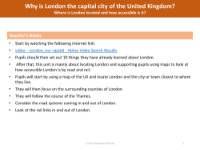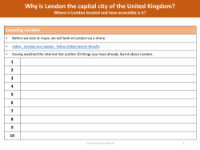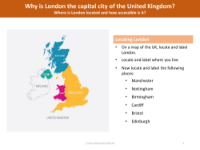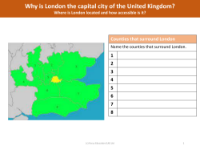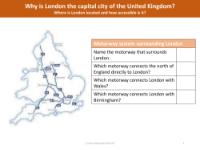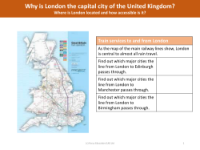Where is London located and how accessible is it? - Presentation
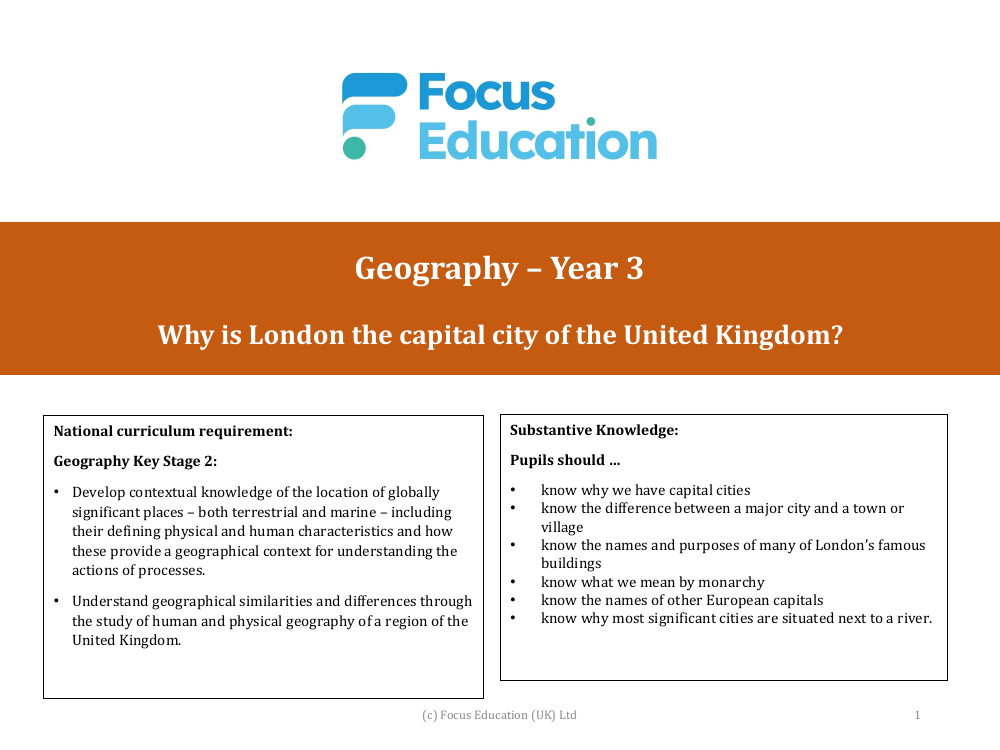
Geography Resource Description
London is the bustling capital city of the United Kingdom, renowned for its historical significance and modern influence. Geographically, it is situated in the southeast of England, straddling the famous River Thames, which has been pivotal to its growth and accessibility. London is exceptionally well-connected, making it easily accessible from various parts of the country and beyond. The city is served by an extensive transport network, including the London Underground – an iconic subway system that provides rapid transit across the city. Additionally, numerous overground train services link London to other major cities and regions in the UK, while the surrounding motorway system facilitates convenient road travel.
As the capital, London is home to the UK government's headquarters, with the Houses of Parliament being a key location for political decision-making. The city's importance is further underscored by the presence of the monarchy, with Buckingham Palace serving as the monarch's principal residence. London's significance is also marked by its array of famous buildings and landmarks, which are not only tourist attractions but also hold cultural and historical value. The city's status as a capital is central to the National Curriculum's Geography Key Stage 2, where students explore the characteristics that define globally significant places and the geographical context that shapes them. Through fieldwork and map reading, pupils gain a deeper understanding of the differences between urban and rural environments and the factors that contribute to a city's prominence and development.
